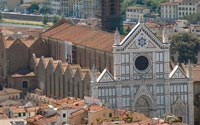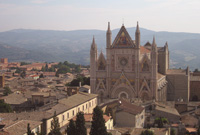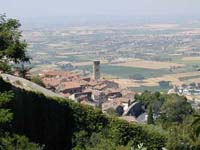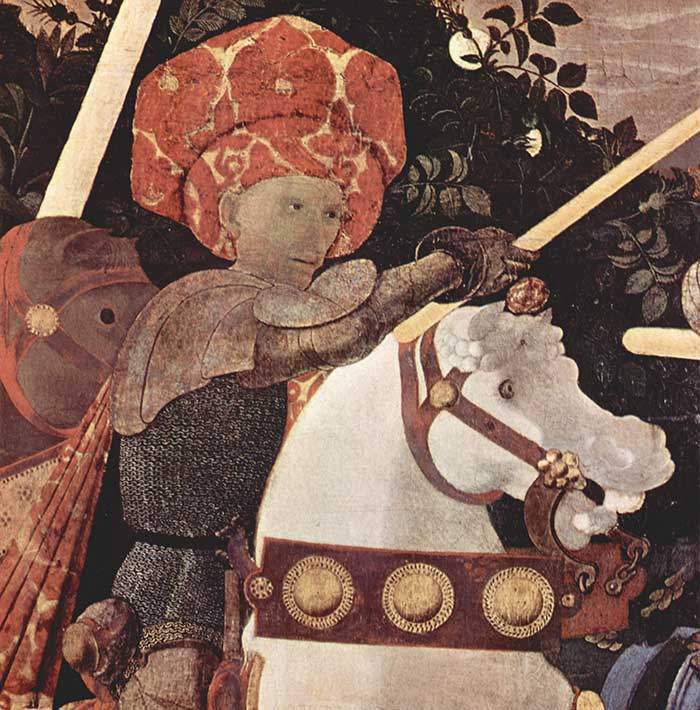 |
| Paolo Ucello, Niccolò Mauruzi da Tolentino at the Battle of San Romano (detail, probably c. 1438–1440), egg tempera with walnut oil and linseed oil on poplar, 182 × 320 cm, National Gallery, London |
Paolo Ucello | The Battle of San Romano, c. 1438–1440 |
One of the most important paintings of the Renaissance is the triptych Battle of San Romano by Paolo Uccello, the apprentice of the famous Italian sculptor Ghiberti.
|
|
||
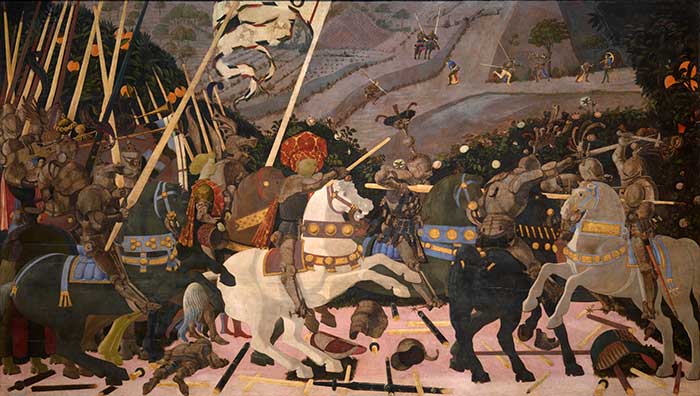 |
||
Paolo Ucello, Niccolò Mauruzi da Tolentino at the Battle of San Romano (probably c. 1438–1440), egg tempera with walnut oil and linseed oil on poplar, 182 × 320 cm, National Gallery, London
|
||
| In the London painting, Niccolò da Tolentino, with his large gold and red patterned hat, is seen leading the Florentine cavalry. He had a reputation for recklessness, and doesn't even wear a helmet, though he sent two messengers (the departure of the two messengers, depicted centre, top) to tell his allied army of Attendolo to hurry to his aid as he is facing a superior force.[3] In the foreground, broken lances and a dead soldier are carefully aligned, so as to create an impression of perspective. The three paintings were designed to be hung high on three different walls of a room, and the perspective designed with that height in mind, which accounts for many apparent anomalies in the perspective when seen in photos or at normal gallery height. Many areas of the paintings were covered with gold and silver leaf. While the gold leaf, such as that found on the decorations of the bridles, has remained bright, the silver leaf, found particularly on the armour of the soldiers, has oxidized to a dull grey or black. The original impression of the burnished silver would have been dazzling. All of the paintings, especially that in the Louvre, have suffered from time and early restoration, and many areas have lost their modelling.[2] |
||
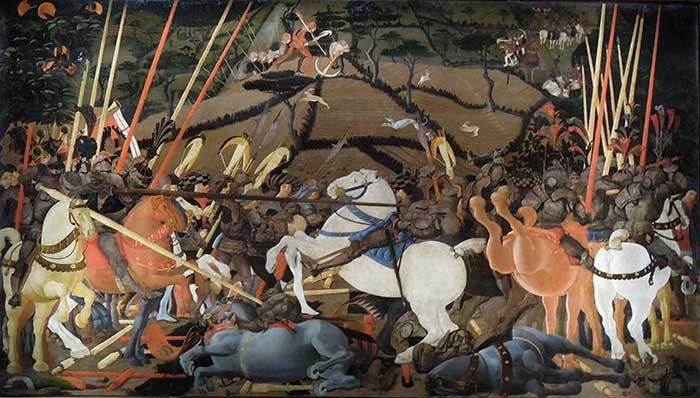 |
||
Paolo Ucello, Niccolò Mauruzi da Tolentino unseats Bernardino della Ciarda at the Battle of San Romano (dating uncertain, c. 1435–1455), tempera on wood, 182 × 320 cm, Galleria degli Uffizi, Florence
|
||
In the center panel housed in the Uffizi (below), Bernadino della Ciarda, the leader of the Sienese mercenaries is struck by a lance and knocked from his horse. The soldier is the man on the white horse just in the center, hit by an enemy spear. The crux of the battle shows Bernadino sprawled on the ground to the right of the painting's central axis. |
||
 |
||
Paolo Ucello, The Counterattack of Michelotto da Cotignola at the Battle of San Romano (c. 1455), wood panel, 182 × 317 cm, Musée du Louvre, Paris
|
||
Paolo Uccello The Battle of San Romano - YouTube
|
||||
Private life of a Masterpiece (BBC Documentary) - Paolo Uccello The Battle of San Romano - YouTube
|
||||
References in popular culture The dark horse in the Louvre panel, mounted by Micheletto Attendolo, can be seen painted in a tapestry, in the first segment ("Metzengerstein") of the 1968 omnibus film 'Spirits of the Dead'. In the 4th Episode (Lucrezia's Wedding) of the 2011 TV Series 'The Borgias', the London and Louvre panel is shown adorning the dining hall walls of the Florentine Prince when cardinal Della Rovere visits him in Florence.
|
||||
|
||||
Podere Santa Pia |
Podere Santa Pia, garden view, December |
Florence, Santa Croce |
||
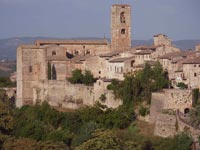
|
||||
Colle Val d'Elsa |
Siena, duomo |
Orvieto, Duomo |
||
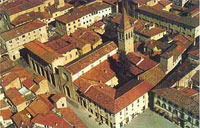 |
||||
Sansepolcro |
View from Podere Santa Pia
on the coast and Corsica |
Cortona |
||
| The town of Cinigiao is just across the valley, and the Abbey od Sant'Antimo, Montalcino, Pienza and Montepulciano are within easy driving distance. The house has been beautifully restored to create spacious, stylish rooms combining elements of rustic tradition with modern comforts. It has terracotta tiled floors and beamed ceilings and breathtaking 300 degree views of the Maremma hills. Podere Santa Pia creates a perfect platform from which to enjoy the breathtaking scenery of this unique part of Italy. |
||||
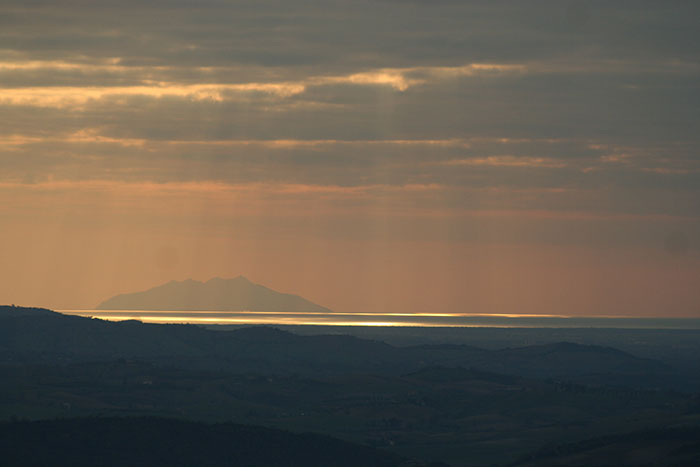 |
||||
Podere Santa Pia is a beautifully renovated holiday house, located in a panoramic position, offering its guests a breathtaking view over the Maremma hills. On clear days or evening, one can even see Corsica.
|
||||
The Ucello panels were a subject in the BBC series The Private Life of a Masterpiece, 2005. Paolo Ucello The Battle of San Romano | Private life of a Masterpiece (BBC Documentary) by ArtHistoryLuv
|
||||
|
Paolo Uccello, Battle of San Romano, c. 1438-40 | Smarthistory, Art History at Khan Academy |
||||



